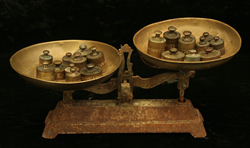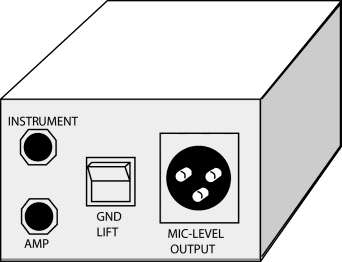Impedance is one of audio’s more confusing concepts.
To clarify this topic, I’ll present a few questions and answers about impedance.
What Is Impedance?
Don’t let this definition scare you – later I’ll just describe how to connect this to that!
Impedance (Z) is the resistance of a circuit to alternating current, such as an audio signal. Technically, impedance is the total opposition (including resistance and reactance) that a circuit has to passing alternating current.
A high-impedance circuit tends to have high voltage and low current. A low-impedance circuit tends to have relatively low voltage and high current.
I’m Connecting Two Audio Devices—Is It Important To Match Their Impedances?
First some definitions. When you connect two devices, one is the source and one is the load. The source is the device that puts out a signal. The load is the device you are feeding the signal into. The source has a certain output impedance, and the load has a certain input impedance.
A few decades ago in the vacuum-tube era, it was important to match the output impedance of the source to the input impedance of the load. Usually the source and load impedances were both 600 ohms. If the source impedance equals the load impedance, this is called “matching” impedances. It results in maximum power transfer from the source to the load.
In contrast, suppose the source is low Z and the load is high Z. If the load impedance is 10 times or more the source impedance, it is called a “bridging” impedance. Bridging results in maximum voltage transfer from the source to the load.
Today, nearly all devices are connected bridging—low-Z output to high-Z input—because we want the most voltage transferred between components.
For best sound quality and highest voltage transfer, the input impedance of the connector you are plugging into should be at least 7 to 10 times higher than the output impedance of the source (such as an electric guitar or microphone).
For example, if a mic’s impedance is 200 ohms, the input impedance of a mic input (that you plug the mic into) should be 7 to 10 times higher, or 1400 to 2000 ohms. If you look at the input impedance spec for mixer mic inputs, it is typically around 1500 ohms.
Similarly, the impedance of an electric-guitar pickup is typically 20 to 40 K ohms (20,000 to 40,000) ohms. So the ideal input impedance of a guitar amp (or direct box input, or instrument input) is at least 7 to 10 times higher, or at least 280K to 400K ohms.
If you connect a low-Z source to a high-Z load, there is no distortion or frequency-response change caused by this connection. But if you connect a high-Z source to a low-Z load, you might get distortion or altered response.
For example, suppose you connect an electric bass guitar (a high-Z device) into an XLR-type mic input (a low-Z load). The low frequencies in the signal will roll off, so the bass will sound thin. And the highs might roll off, making the sound dull.
We want the bass guitar to be loaded by a high impedance, and we want the mic input to be fed by a low-impedance signal. A direct box or impedance matching adapter does this (Figure 1).
Plug the guitar cord into the phone jack, and plug the XLR into a mic input in a snake or mixer. Use it with a bass guitar, electric guitar, or synth.
A passive direct box uses a transformer. An active direct box usually has a field effect transistor (FET) input. The FET has a very high input impedance that does not load down the bass guitar.
In general, the input impedance of a direct box (or an instrument jack) is higher than the input impedance of a line input.
What About Microphone Impedance?
Recording-quality mics have XLR (3-pin) connectors and are low Z (150 to 300 ohms). A low-Z mic can be used with hundreds of feet of cable without picking up hum or losing high frequencies.
I’m Connecting A Mic To A Mixer—Is Impedance A Consideration?
Yes. If a mixer has phone-jack inputs, they are probably high Z. But most mics are low Z. Plugging a low-Z mic into a high-Z input results in a weak signal. That’s because a high-Z mic input is designed to receive a relatively high voltage from a high-Z mic, and so the input is designed to have low gain. So there isn’t much signal amplification.
If you can’t get enough level when you plug a mic into a phone-jack input, here’s a solution: Between the mic cable and the input jack, connect an impedance matching adapter (Figure 2) such as Radio Shack 274-016. It steps up the voltage of the mic, giving it a stronger signal.
The adapter is a tube with a female XLR input and a phone-plug output. Inside the tube is a transformer. Its primary winding is low Z, wired to the XLR. It secondary winding is high Z, wired to the phone plug.
Connect the mic to the XLR; connect the phone plug to the mixer’s phone jack. Then the mixer will receive a strong signal from the mic.


















